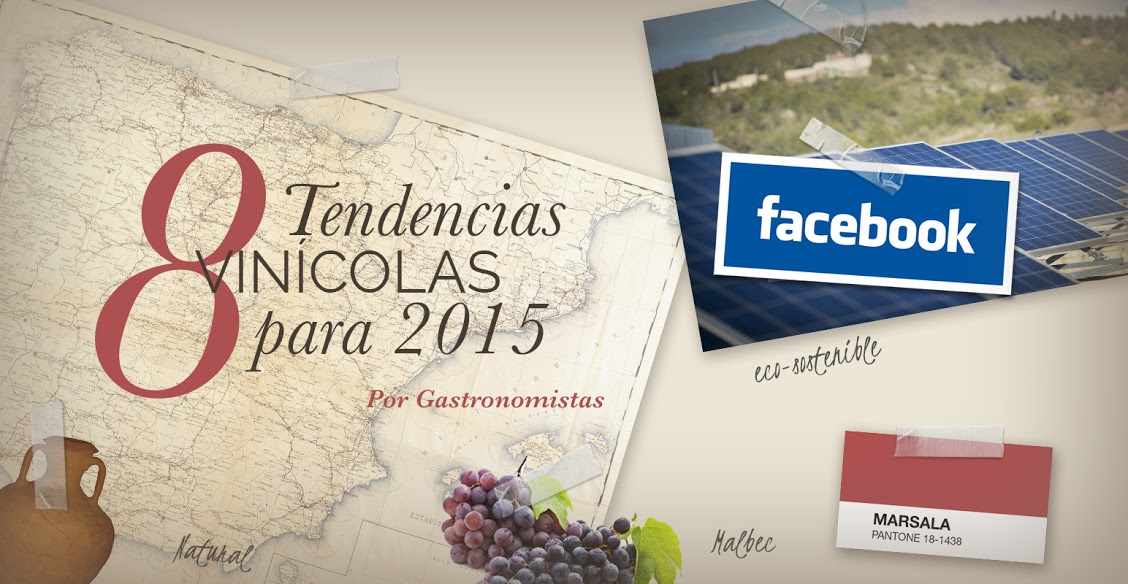8 Wine Trends in 2015

We invite you to savor eight trends in a year inspired by all things wine. We will even dress the part—the fashion gurus have picked Marsala as their Pantone color of choice.
1. The sustainability boom
Organic, environmentally friendly production will leave the fringe to become the new mantra. Increasingly aware of our natural environment and the effects of climate change, we see organic farming in a very positive light, especially when compared to the use of chemical products. We also recognize the importance of managing our water and energy use responsibly. It is about obtaining better, healthier wines by respecting the vineyard and the land, as well as appreciating artisan craftsmanship.
2. Experimenting with wine at its most natural
Organic and natural wines are not the same thing. The latter do not contain sulfites, and no chemicals or additives are used in the vineyard or during fermentation—or ever, for that matter. It is about showing utmost respect for the earth and the vine, and seeking inspiration in the artisan wines of the past: some even ferment the must in clay amphorae. The result? Peculiar, rustic wines that aren't easily accessible, but truly authentic. They won't go mainstream, but remain an alternative trend that keeps carving its niche in 2015 with new brands and a greater presence at bars (some of which even use their expertise in natural wines to attract customers).
3. Revived local varieties
In the past, wineries went to great lengths to adapt foreign varieties to our soil. But why reject our own heritage when it is so rich? Phylloxera brought about the loss of a great many varieties, and agricultural engineers have been trying to revive them for quite some time. Wine experts value these vanished, forgotten or rare specimens very highly. This is why varieties like Garnacha and Monastrell have become so popular in recent years. These scientific efforts will continue to bear fruit, which will then be transformed into surprising artisan wines.
4. Malbec, bigger than ever
This year the star among Argentinean wines will see its reputation grow even more, all around the world. This according to the ultimate wine guru, Mr. Robert Parker, who writes in Food & Wine: “This French varietal, which failed so miserably on its home soil in Bordeaux, has reached startling heights of quality in Argentina. Both inexpensive, delicious Malbecs and majestic, profoundly complex ones from high-elevation vineyards are already being produced, and by 2015 this long-ignored grape's place in the pantheon of noble wines will be guaranteed.”
5. Light wines from high-elevation vineyards
The trend toward healthier eating also translates into a greater appreciation for fresh, low-alcohol wines. Less oak and more fruit is a better match for our contemporary diet. Furthermore, many wineries are experimenting with high-elevation vineyards in mountainous areas in response to climate change. The result: generally lighter wines...or how to kill two birds with one stone.
6. Youthful labels and names
The goal is to avoid all snobbishness and have wine appeal to a wider audience, especially young people. Opting for creative designs and carefree, fun-loving, even irreverent brands is an excellent way of doing so. The internet, the rise of specialized blogs and online stores, as well as increasing social media activity will take care of the rest. The wine world is becoming more democratic and open-minded.
7. A focus on winemakers rather than appellations of origin
Recent controversies over wineries that have renounced their appellations of origin have made it patently clear that belonging to one is not always synonymous with quality. These days, who makes the wine—and how—determines our level of trust more than ever. In other words, look for the winery's name on the label—and if you like the wine, give their other products a try.
8. Spain is in style
Just like Spanish food, our wines have become a worldwide trend. Tradition, quality, creativity and a modern outlook are among the qualities that international experts appreciate the most about us. According to them, regions not as well known internationally like Toro, Priorat or Jumilla are the most remarkable. Alongside Spain, wines from southern Italy and other, more unexpected countries like Bulgaria, Romania, Russia, Mexico, China, Japan, Lebanon and Turkey will also achieve international recognition. The wine world is embracing diversity.
About Gastronomistas:
“In two words: gastrónomos y periodistas (gourmets and journalists). We write about popular food culture in a language everyone can understand.”
For more, but not necessarily better, stuff visit us at http://www.gastronomistas.com/
